Havapoo vs Havanese: How Are They Different? (With Pictures)
Updated on
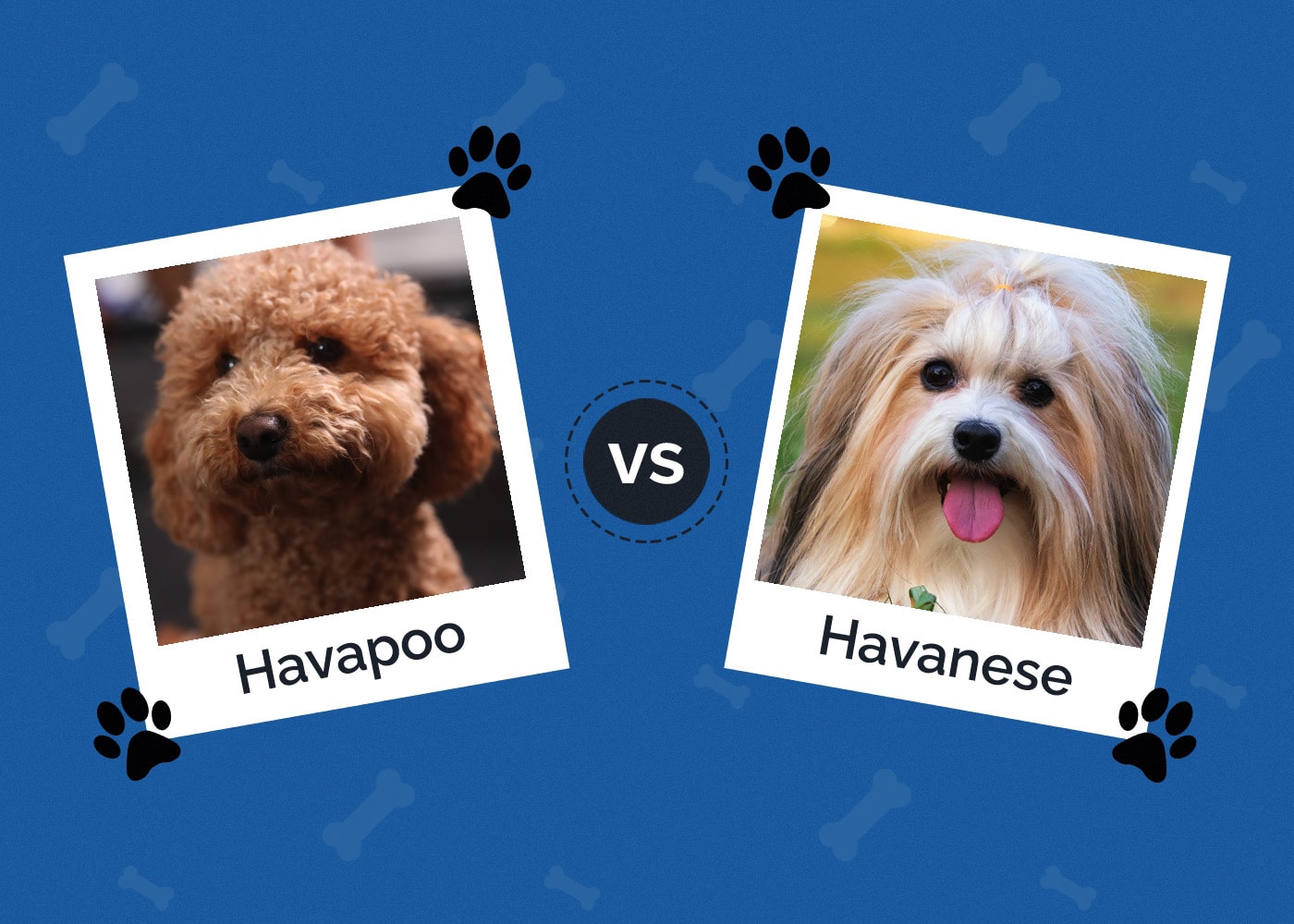
Havapoo and Havanese are two stunning dog breeds with loving personalities. Many people think they look alike and may have trouble differentiating them, especially as puppies. But why is that?
Havanese is a purebred dog native to Cuba, while the Havapoo is a crossbreed between a Havanese and a Poodle. Since Havapoos are “part Havanese,” they have many similarities, and their differences are mainly due to the Havapoo’s Poodle DNA.
This article covers all the details of these two breeds, so hopefully, you can understand them better!
Visual Differences

At a Glance
- Average height (adult): 8–15 inches
- Average weight (adult): 7–30 pounds
- Lifespan: 14–16 years
- Exercise: 1 hour per day
- Grooming needs: Moderate
- Family-friendly: Yes
- Other pet-friendly: Often
- Trainability: Intelligent, playful
- Average height (adult): 8–13 inches
- Average weight (adult): 7–13 pounds
- Lifespan: 13–16 years
- Exercise: 30 minutes per day
- Grooming needs: Moderate
- Family-friendly: Yes
- Other pet-friendly: Often
- Trainability: Intelligent, occasionally stubborn, mostly eager to please
Havapoo Overview
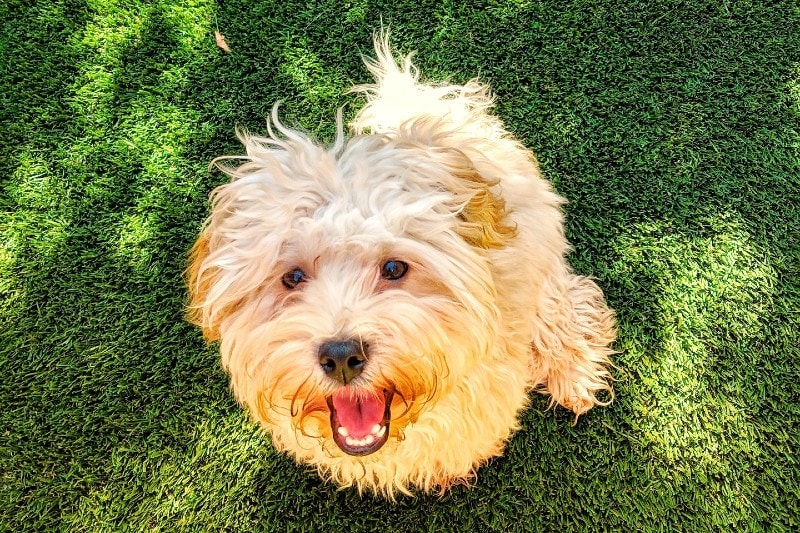
Havapoo is a hybrid breed, a mix of a Havanese and a Poodle. Many people also know this breed by other names, such as Poovanese, Havadoodles, and Havanoodles.
Appearance
Since Havapoos are crossbreeds, each puppy can be different; some may inherit more Poodle genes, while others may inherit more Havanese genes. However, all Havapoo puppies are small, typically between 8 and 15 inches high, and weigh between 7 and 30 pounds.
They can have either a long silky coat, a curly tight coat, or a mix of the two. Their colors typically vary too, as they can be gray, brown, white, tan, black, or a blend of those colors.
Personality & Character
The Havapoo is a cheerful, fun-loving, energetic breed that loves to be around people. They like to be by their owner’s side and are always cuddly. However, that means they dislike being left alone and could develop separation anxiety. This is something to keep in mind, as you’ll need to have someone ready to watch the dog when needed.
Havapoos are friendly, so they are great for families with kids and other pets, but they’re not suitable for guardian dogs because they’re people-loving canines.

Exercise
Havapoos are active, so regular exercise is necessary to keep them healthy and strong. Although small, these dogs have Poodle genes, which makes them highly energetic; they should get at least 1 hour of exercise per day to stay in top shape.
That means you should go on regular walks, take your Havapoo to the park, and socialize with others. It’s also good to play games suitable for your Havapoo to mentally stimulate them.
Training
When it comes to training, you should start while your Havapoo is young. Since these dogs are quite intelligent, they’re easy to train as long as you practice positive reinforcement.
Remember to be patient and stay calm during your training session, as your Havapoo could get distracted if you get stressed or yell. It’s best to ignore the negative behaviors but reward the positive ones; this will help your dog associate good behavior with rewards.
Health & Care
These dogs require regular brushing, nail trimming, dental care, and having their ears and eyes cleaned. Their coats don’t get too tangled, so brushing can be done two to three times a week.
Besides that, Havapoos are not that high maintenance and don’t require any type of special care.
Havapoos are healthy dogs that can live for over 14 years. However, this breed has a predisposition to certain conditions due to their Poodle and Havanese genes. These include:
- Patellar luxation
- Progressive retinal atrophy
- Dental disease
- Legg-Calvé-Perthes disease
- Addison’s disease
- Chronic active hepatitis
- Cushing’s disease
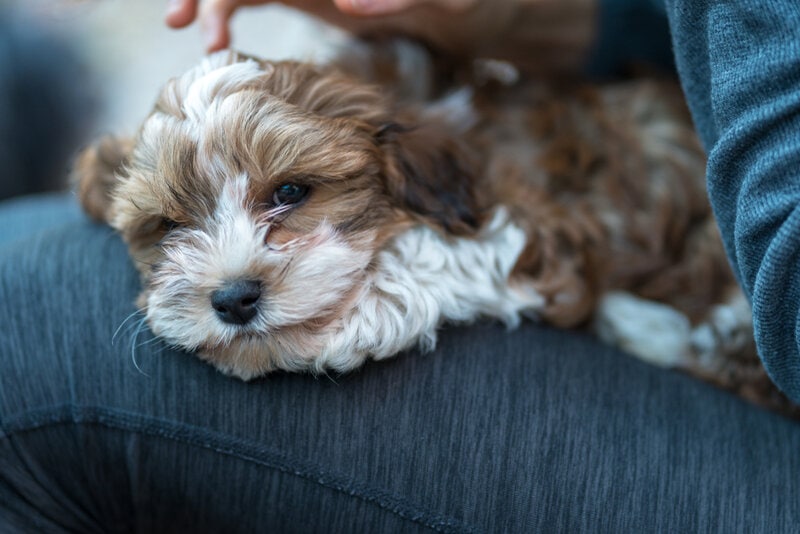
Suitable for:
Havapoos are small dogs, which makes them great for people living in apartments, though they’re also excellent for people who own a house. They are friendly and social, making them ideal for families with kids and couples.
Since they can suffer from separation anxiety, Havapoos are not the best choice for people living alone, especially if they don’t have someone ready to be with their dog when as needed. However, if someone is always home, Havapoos can live in any type of house.
- Energetic
- Affectionate
- Friendly
- Intelligent
- Great for families with kids
- Predispositions to various diseases and conditions
- Could suffer from separation anxiety
- Shouldn’t be left alone
Havanese Overview
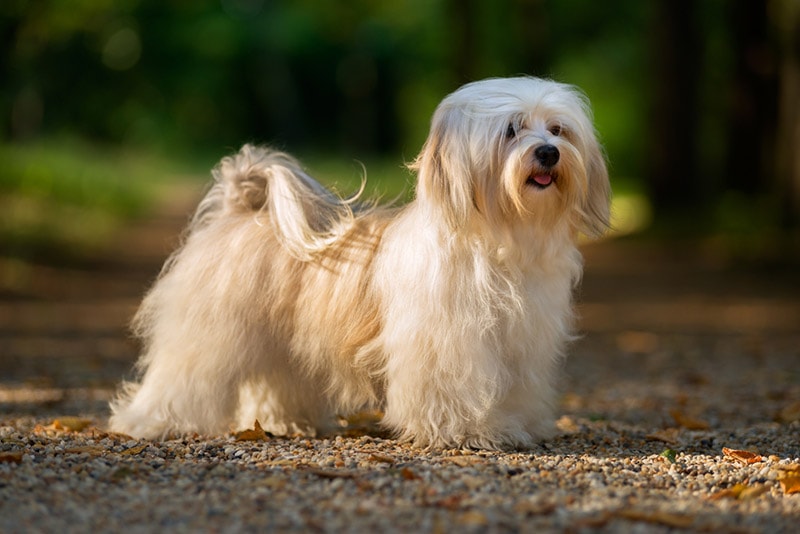
Havanese are cute little dogs that light up the room with their energy. This purebred dog breed is native to Cuba and was recognized by the American Kennel Club in 1996.
Appearance
Havanese are small dogs with long, silky double coats and almond-shaped eyes. They are typically between 8 and 13 inches high and weigh between 7 and 13 pounds. Their coats are around 6–8 inches long and can be straight or wavy.
These dogs have small bodies and short legs; their ears are dropped back, and their tails fall over their back, making them look extremely cute.
They come in various color combinations, including brown, white, black, tan, and blends of those colors.
Personality & Character
Havanese dogs are smart, loving, caring, and laidback. They love people and are outgoing, which makes them great for families with kids. This breed loves to be energetic and playful and enjoys spending time with people, especially their owners.
However, due to this affection, Havanese can showcase behaviors such as frequent barking that may appear clingy and possessive. These dogs are mostly well-behaved, but they need to be trained from an early age.
Most of the time, Havanese dogs dislike being alone and may develop separation anxiety when you leave them for longer periods. When you train them while young, Havanese will typically be excellent around other animals and mostly friendly with strangers.
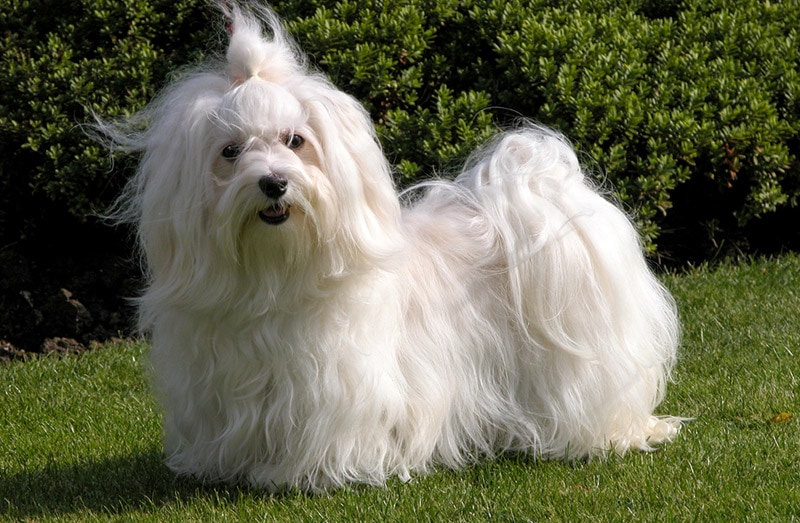
Training
Havanese dogs are intelligent, which makes them easy to train. They love to learn and spend time with their owners, so training represents the perfect combination of their favorite activities. This breed will typically playfully engage in the session, eager to please you.
However, they can become stubborn and can have a hard time adjusting to new things, especially during housebreaking, so it’s best to start training your Havanese dog from a young age.
During training, try to practice positive reinforcement to help your Havanese learn quicker. Expose them to new things, animals, and people to socialize them from a young age, but remember not to rush things. Instead, be patient and gentle to allow your Havanese to pick things up at their own pace.
Health & Care
When it comes to their health and care, Havanese dogs are not too high maintenance and are mostly healthy. When provided with proper care, they have a long lifespan and can be with you for more than 10 years.
Proper care of a Havanese includes providing high-quality food, enough physical and mental stimulation, and adequate maintenance. You should regularly groom your Havanese, including brushing and bathing them, trimming their nails, and cleaning their ears and eyes.
Also, regularly take your Havanese to the vet, and ensure good dental hygiene in your dog due to the potential for dental problems.
Although this breed is mainly healthy, you should be alert about the possible predisposed medical problems that Havanese may experience, including:
- Patellar luxation
- Progressive retinal atrophy
- Dental disease
- Legg-Calvé-Perthes disease
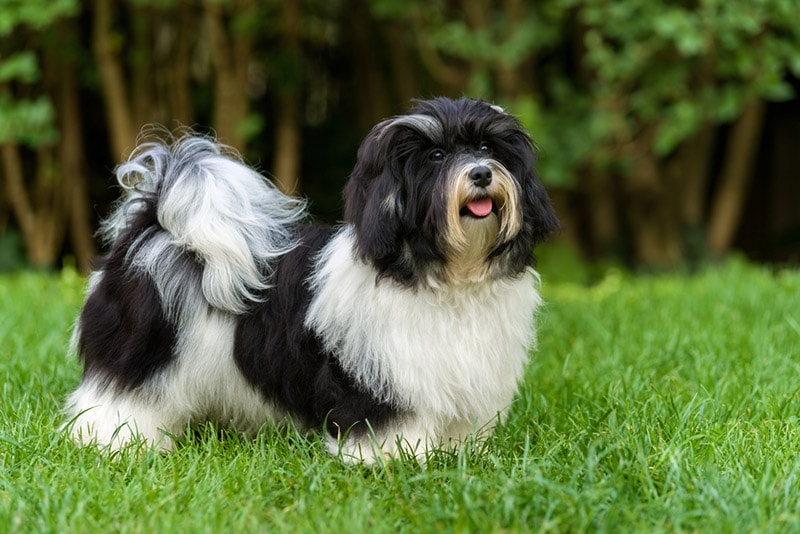
Suitable for:
Havanese dogs are friendly and social, which makes them perfect for people who are outgoing and energetic. They are typically not ideal for someone living alone, due to the fact that they can develop separation anxiety.
However, Havanese dogs are perfect for families with kids and for households where there’s always someone around. If they get proper care and won’t be left alone for long periods, Havanese dogs can live in almost any type of household.
One thing to remember is that Havanese dogs can bark frequently, so they may be unsuitable for neighborhoods that require peace and quiet.
- Energetic
- Social
- Friendly
- Intelligent
- Affectionate
- Great around kids
- Low maintenance
- Occasionally stubborn
- Can develop separation anxiety
- Can’t stay home alone for extended periods
- Can become barky
- Unsuitable for quiet neighborhoods
Which Breed Is Right for You?
Havanese and Havapoo dogs are similar in temperament, training, exercise, and grooming, so it all comes down to your preference. Both are small, great with kids, friendly, and social. They love to be around people and could potentially develop separation anxiety when left alone.
One thing to remember is that Havanese dogs may become slightly barkier than Havapoos when left alone or aggravated. Also, although both breeds are relatively healthy, Havapoos are more prone to certain diseases and conditions than Havanese dogs.
Both breeds are equally smart and cute, so you won’t make a mistake choosing either of them!
Related Reads:
- Bichon Frise vs. Havanese: How Are They Different? (With Pictures)
- Havapoo vs Cavapoo: Main Differences (With Pictures)
Featured Image Credit: (L) Wirestock Creators, Shutterstock | (R) Sandra Huber, Shutterstock














